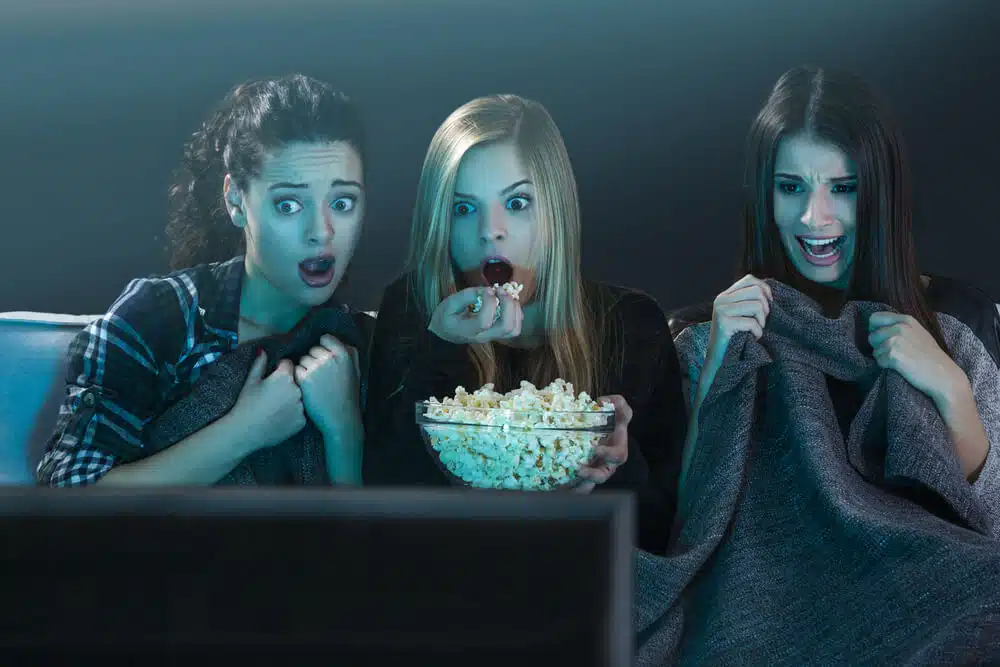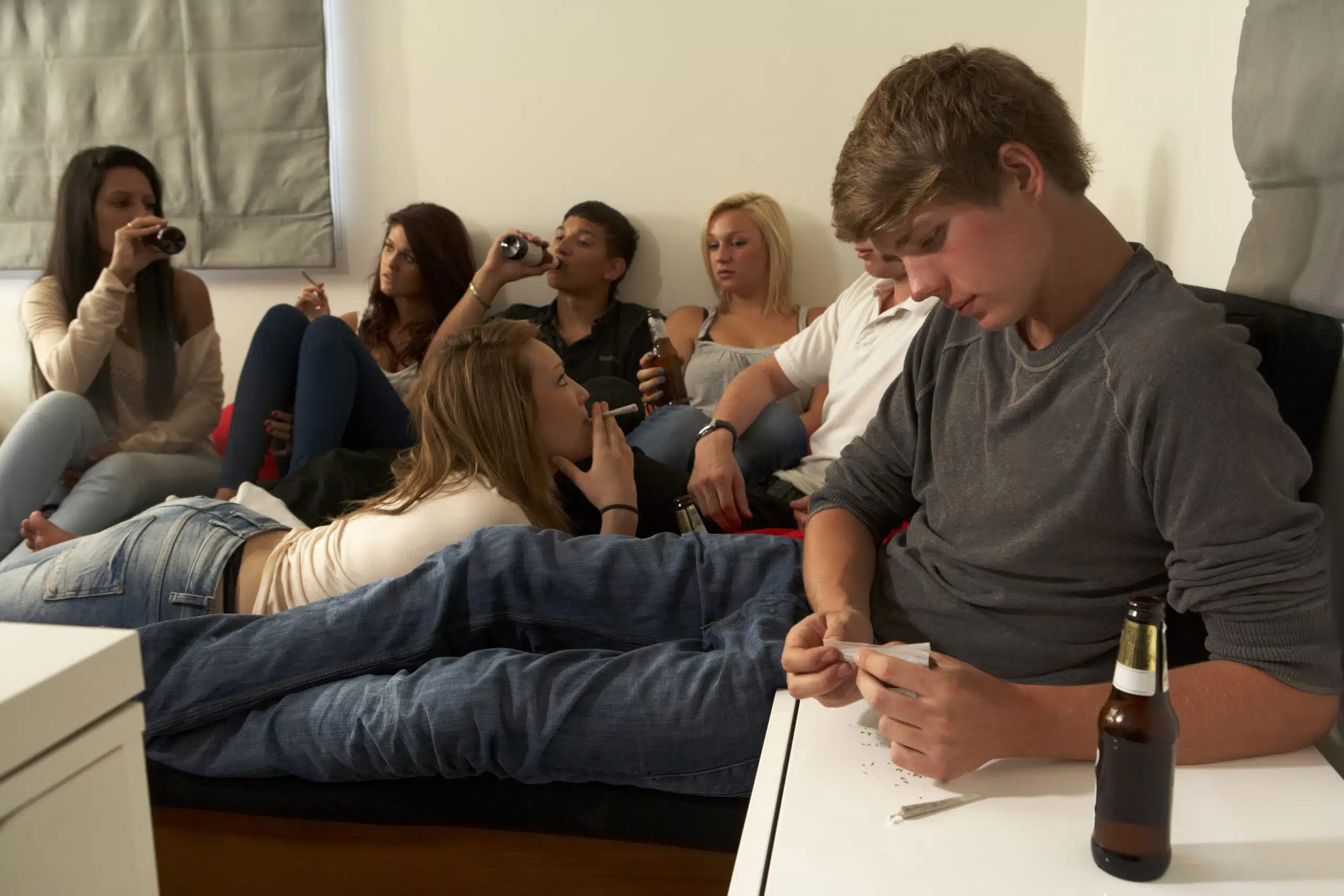
How Horror Portrays Mental Health
It’s a dark, stormy, rainy night. The camera pans out to center on a lonely, dreary brick building with bars on the windows, locks on the doors, and gated entrances with security guards. Such is the setting for many films within the horror genre. One particular element that ties so many of these horror movies together: a history of mental illness that spurs murder, stalking, and terror.
So many horror movie “bad guys” begin their story in the asylum or exhibiting symptoms of mental illness. The Halloween series begins with Michael Myers escaping the asylum, Jason’s mother in Friday the 13th speaks in his voice. In Psycho, Normal Bates channels his mother, and countless Stephen King movies touch on mental illness in some form or another. Years after the release of these movies, the American Psychiatric Association would level strong criticisms at DC comics for their portrayal of Batman’s ‘rogues gallery” and its misrepresentation of mental illness. Not so long after, came the anger and furor over how the Joker was portrayed in a series of movies ranging from Suicide Squad to The Joker.
Historically, horror movies are filled with scary people who are presented as or described as being mentally ill or even purely evil. Given the success of the Halloween franchise and countless films in the same vein, it is easy to see audiences have a fascination with mentally unstable characters. Outside of books and comics, popular culture and mainstream media have historically misrepresented mental illness in television and movies. Many shows continue to propagate the myth that the mentally ill are dangerous. Over the years, how has horror exploited and stigmatized mental illness?
Mental Illness, Horror, and Freud
While antagonists with mental illness are familiar to today’s horror genre, this wasn’t always the case. In the early 1930s, horror featured mostly supernatural threats such as mummies, vampires, and werewolves. This was also the time when the “mad scientist” entered film with characters such as Frankenstein or Jekyll and Hyde. Soon came the Cold War-era films, which still featured creatures over humans in the role of the terrifying “bad guy.” This era brought about movies such as The Blob, which continued to propagate the fear of the external monster threat and set a precedent for later negative representations of mental illness in film. The shift came in the 1960s with the release of the movie Psycho. At this point, a change occurs from fearing the external in terms of monsters and creatures of the unknown, to internal threats like the kindly doctor next door. Psycho was a significant success in the box office and remains a classic in the horror genre. However, with the film emerged mental illness as a prevalent device in the horror movie industry. Psycho was a turning point that began the popularity of portraying psychotic killers who were not merely scientists gone mad but who repeatedly killed for pleasure and whose murders are accounted for almost solely by the fact that they are mentally unstable.
Perhaps no other psychologist has influenced cinema more than Sigmund Freud. Given his ideas around our conscious and unconscious thought processes, it is not surprising that his teachings and beliefs provide compelling story templates for filmmakers and screenwriters alike. We can attribute Psycho to Alfred Hitchcock, who himself was fascinated by Freudian psychology. While it was essentially Hitchcock’s first (and only actual outright horror movie), Psycho led the shift from gothic monsters to mentally and emotionally damaged madmen (and women).
Following on the heels of this success, Hollywood horror increasingly intertwined trauma and mental illness with violence. The ’70s and ’80s brought us Martin Scorsese’s Taxi Driver and other flicks that took audiences on the killers’ journey from early trauma to a deranged psychopath with a side of gore for good measure. Other slasher movies followed, which continued to routinely employ mentally ill killers as their masked antagonists. From Mike Myers to Jason, the escaped lunatic, lurking in the dark, became a popular horror staple. Other horror movies, such as Sleepaway Camp, depicted transgenderism as a mental illness that triggered homicidal violence.
The Mental Asylum as Iconic Horror
Horror movies are no stranger to using iconography (visual images used in a work of art, film, etc.) to further portray mental illness as the root of evil in cinema. Batman has Arkham Asylum, Gothic castles, abandoned psychiatric hospitals, churches, and haunted houses are all commonplace in scary movies. Also, religious symptoms, churches, and graveyards are often staple locations of supernatural horror films. The asylum has frequently figured into many horror movies. Generally, horror movies depict hospitals as gothic places, with looming arches, heavy doors, dim hallways, and lots of cold, dark spaces. Patients in these moves are inmates, often raving and ranting while confined to padded cells or chained to beds.
In horror movies, the mental health facilities, such as Beachside Teen Treatment Center, which are so essential to the treatment and recovery of teens with mental health conditions, are portrayed as lonely places where evil manifests. The opening episodes of season one of American Horror Story depict the twisted outcomes of when teen mental health and treatment go wrong. Although not a perfect remake, The House on Haunted Hill’s opening scene also puts mental illness in the forefront of a twisted storyline. As is a familiar plot, the “crazy” patients revolt against a cruel doctor in a psychiatric institute for the criminally insane. Other movies, like Session 9, see mental hospitals as destitute places where mental illness and demonic influences are one and the same. Haunted hospitals, psychiatric treatment centers, and asylums are a commonplace fixture in horror.
Impacts of the Negative Representations of Mental Illness in Horror
The negative options that form from the portrayal of mental illness across all film genres do not stop when the credits roll or the television is turned off. Unfortunately, the stigma and negative view of mental illness translate directly into the real world. Despite all continued efforts, the media’s and Hollywood’s coverage of mental illness and those affected by mental illness are still largely stigmatizing and discriminatory. Today, even kids’ movies such as Good Burger reference mental illness. As harmless as a kid’s movie may seem, the characters in the film go to “Demented Hills Asylum” mid-way through the movie. This plot element that sparked outrage among parents and individuals with mental health conditions alike. As long as the opinions and representations of mental illness continue to be misguided and misrepresented, it stands to reason that film will continue to exploit them to meet their ends.
Horror Taking a New Direction in the Depiction of Mental Illness
Not all horror movies depict the mentally ill as dangerous. More recently, a few movies have been released that offer more sympathetic portrayals of mental illness. For example, Jennifer Kent’s The Babadook. At first glance, the movie is about the boogeyman and his persistent haunting of a single mother and her son. On a deeper level, the film is one that intricately explores depression and trauma without one stigmatizing either condition. Unlike M. Knight Shyalaman’s Split, which ultimately equates mental illness with monstrosity, more recent movies have begun to depict mental illness with more compassion and empathy. At the very least, this can be taken as a sign that horror movies can have more complicated conversations about mental illness with reducing the presumed ill antagonist to a representation of evil. Even the most recent Halloween sequel has delivered a more diplomatic approach to addressing mental illness. Of course, the escaped lunatic plotline remains, and its opening scenes replay all of the traditional stock stereotypes about the mentally ill. However, Halloween 2018 focuses more on the main character’s trauma and how it has impacted generations of her family. More importantly, it avoids demonizing her or her mental illness. While it is far from a perfect representation, it avoids walking the same path as many slasher movies. At a minimum, it shows horror movies can have more complicated, challenging conversations about mental illness.
Mental Illness and Horror in the Future
The news media have drawn links between mental illness and violence for years. Back-and-forth debates around gun control and mental health usually quickly follow mass shootings or other violent events. Considerable efforts have been made in recent years to de-stigmatize mental illness, but, in many cases, the stigma remains. Horror movies are unlikely to stop including representations of mental illness on the big screen. After all, horror works best when the story examines the things that frighten us the most. For some, their greatest fear may indeed be confronting their own mental illness. For others, it could be one of the many fear-inducing elements horror represents. Although a few recent horror movies have illustrated how the genre can represent mental illness and fear in such a way that it helps to de-stigmatize mental illness rather than exploit it for the shock factor.
For the everyday teen, mental illness is not what the movies portray. Mental illness is a very real disease that impacts the lives of thousands of American teens every year. The symptoms of mental illness can cause difficulties at home, with relationships, with loved ones, friends, and school. Teens struggling with mental illness often struggle to put into words their emotions or disclose to those closest to them that they need help. The stigma that horror (and other movie genres) continue to propagate may make this even more challenging. At Beachside Teen Treatment Center in Malibu, we understand how difficult it may be for your teen to tell you they need help. It may also be difficult for you as a parent to know where to turn to help your teen seek treatment for their mental health needs. If so, contact Beachside Teen Treatment Center today. Let our caring and compassionate staff answer the questions you have about teen mental health treatment and guide your teen towards recovery.
We look forward to working with your teen and your family.




